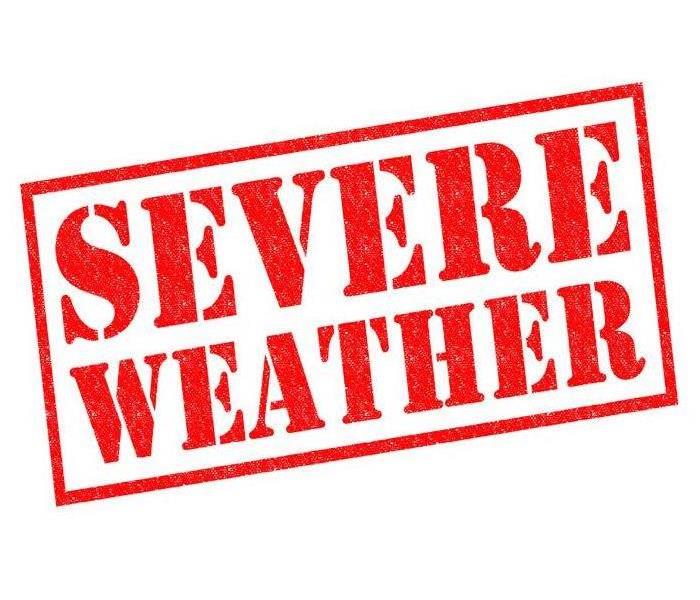Be Prepared For Severe Weather
1/31/2018 (Permalink)
Severe weather can happen any time, anywhere. Being prepared to act quickly can be critical to staying safe during a weather event. In 2013 (1), there were more than 440 weather related fatalities and nearly 2,800 injuries (2). Deadly weather caused more than $8 billion in property damage (3). Many businesses affected by major disasters never reopen–especially if they do not have an emergency plan in place. Knowing your risk of severe weather, taking action and being an example are just a few steps you can take to be better prepared to save your life and assist in saving the lives of others.
KNOW YOUR RISK. The first step to becomingweather-ready is to understand the type of hazardous weather that can affect where you live and work, and how the weather could impact you, your business and your family or employees. Check the weather forecast regularly, obtain a NOAA Weather Radio, and learn about Wireless Emergency Alerts. Severe weather comes in many forms and your shelter plan should include all types of local hazards.
TAKE ACTION. Take the next step in severe weather preparedness by creating a communications plan for your home and business. Put together or purchase an emergency kit. Keep important papers and valuables in a safe place.
BE AN EXAMPLE. Once you have taken action to prepare for severe weather, share your story with co-workers and family and friends on Facebook or Twitter. Your preparedness story will inspire others to do the same.
Preparation is the key to making it through any size disaster and having a plan in place may help minimize the amount of time your business is inactive and get you back in the building faster following a disaster. Don’t wait until disaster strikes. Call us at 702-656-0203 to establish an Emergency READY Profile® for your property and be “Ready for whatever happens.” [1]
Build an Emergency Supply Kit
Suggested items to include in basic emergency kit
- Water (one gallon per person per day)
- Food (non-perishable 3-day supply)
- Manual can opener
- Battery operated radio, preferably a NOAA Weather Radio
- Flashlight and extra batteries
- First aid kit
- Whistle to signal for help
- Clothing
- Dust masks or bandanas
- Plastic sheeting, garbage bags and duct tape
- Wrench or pliers to turn off utilities
- Hygiene items
- Important documents; copies of insurancepolicies, identification and bank account information
- Cash
- Fire extinguisher
- Matches in a waterproof container
(1) Most recent information available from ready.gov
(2) Statistics provided by National Oceanic and Atmospheric Administration
(3) Statistics provided by National Weather Service




 24/7 Emergency Service
24/7 Emergency Service
